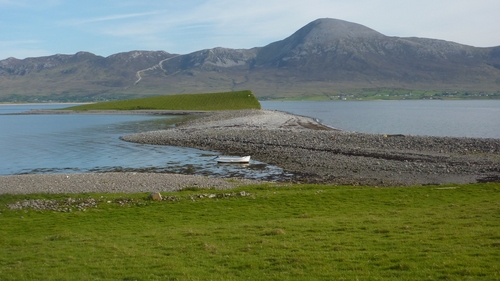

The one person left from the camp, Tom, explains that what was needed was a group of friends who knew each other well, and knew that they could get along, before coming out here. The camera pans around the former campsite and rests on one dishevelled tent, the ‘kitchen’, with bits of clothing and debris lying around. They are next all in the communal tent making music, some drumming on homespun instruments, or whatever is to hand, with one woman making more of the unleavened bread. We then see seven of the group walking along the shore, relaxing, feeding chickens and picking and eating some vegetation and swaggering in a happy mood, while hearing a song being sung by young people, ‘Children of the sun, our time will come.’īack at the campsite, one of the members, a ginger haired, bearded man with a child, explains that the young and work-able leave the area, but that he is most interested in shell fishing. The landlord and his wife helped them and he was blacklisted by his customers. They manage to roll it over the rocks and then tie rope to one end in order to try to pull it up.īack to Westport, and there is a shot of the Asgard pub, the only pub that would serve them. A large piece of timber, a prepared tree trunk, has washed up on the shore, which they see as a gift, and they struggle to rescue it to turn into a totem pole. It is explained that a local fishermen, Bill, seen on his boat, does them some favours occasionally by taking them to the mainland.

Inside a tent several of the group is playing musical instruments (not especially well), while others prepare some food of what appears to unleavened bread. The oldest inhabitant states that he came to live there because he believes that small groups of people living together are a better alternative to large scale society.

One explains that drugs aren’t really a part of their lifestyle, and that they get the odd donation of money, including £200 two weeks previously from John Lennon. A young Dutch couple explain how they came across the commune while hitching across Island. The group is busy digging out the foundations with shovels for their first permanent dwelling structure, and carting away the waste in a wheelbarrow. He explains that they hold their possessions in common, but that doesn’t go down to the toothbrush level – as the film homes in on the loo, sheltered by dry stone walls – but that some clothes and shoes are used communally and that money is held in common. Several tents where members of the commune live are shown. Another member explains that they preferred the name ‘tribe of the sun’ to that of “hippy” as this latter term had come to mean anyone with long hair. The film switches to show views across Clew Bay, before seeing one of the inhabitants of the commune filling up two buckets of water, and explaining how they are regarded as being dirty, even though they probably use more detergent than the locals do. Another local explains that it was felt that the hippies were a bad influence on the local youth and would adversely affect tourism. Patrick at the foot of Croagh Patrick, roads and few houses before arriving at the town of Westport in County Mayo, with a poster advertising ‘Ben E Quinn and the Key Notes.” As we see places and people of the town, local boat man explains how a group including several newspaper reporters arrived and he gave them a ride across to the island. The Irish coast is shown from a boat out at sea and then on land where there is a statue of St. It’s a commune on Dorinish where a sort of alternative society is taking place. Title – On an island lost in Clew Bay, off the Mayo coast, the world of the hippy takes on a new meaning. In the second part of the film it returns a year later to find just one member surviving, Tom, recounting how the promise of a non-materialistic lifestyle fell apart.

The members of the community are shown working, relaxing, and explaining the difficult reception that they received. The island was owned by John Lennon and given custodianship to Sid Rawle, ‘King of the Hippies’, in 1970. This Alan Sidi production is an extremely rare film of the alternative community that settled on the uninhabited Dorinish island off County Mayo.


 0 kommentar(er)
0 kommentar(er)
